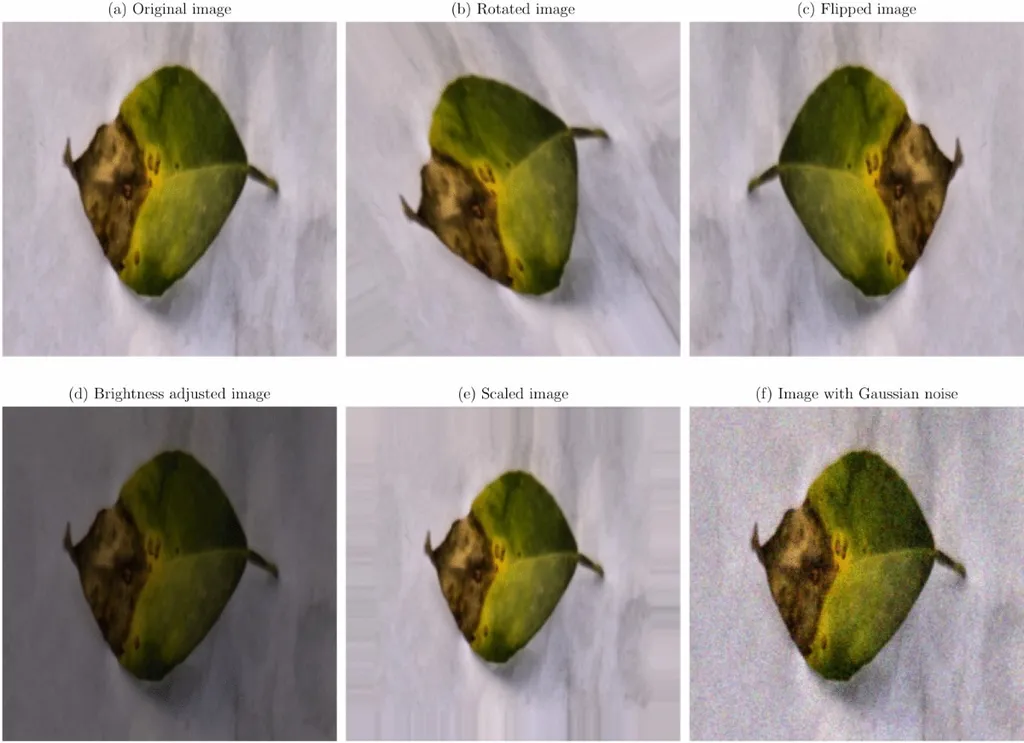In the heart of India’s agricultural landscape, a technological revolution is brewing, one that promises to shield citrus groves from devastating diseases and bolster the livelihoods of farmers. At the forefront of this innovation is P. Dinesh, a researcher from the School of Computer Science and Engineering at Vellore Institute of Technology, who has developed a groundbreaking model to detect and classify multiple citrus diseases with unprecedented accuracy.
Citrus plants, a vital crop for both nutritional and economic reasons, are under constant threat from diseases like citrus greening, black spot, and citrus canker. These ailments can wreak havoc on crop productivity and increase farming costs, jeopardizing food security and farmers’ incomes. Traditional disease detection methods often fall short, but Dinesh’s work is changing the game.
The model, named RSL (Residual Squeeze & Excitation LeakyRelu) Linked-TransNet, is a multiclass segmentation model that can identify and visualize multiple diseases affecting citrus plants simultaneously. “Our model addresses major limitations in existing systems, such as spatial inconsistency, loss of fine disease boundaries, and inadequate feature representation,” Dinesh explains. This advanced technology integrates hierarchical feature extraction, global context modeling via transformers, and precise feature reconstruction, ensuring superior segmentation accuracy and robustness.
The results speak for themselves. The RSL Linked-TransNet architecture boasts impressive metrics, including an accuracy of 0.9755, a precision of 0.9779, a recall of 0.9738, and an Intersection over Union (IoU) of 0.9308. Moreover, the model achieves a mean F1 score of 0.7173 and a mean IoU of 0.7567 for each disease class in images from the test dataset. The segmentation results are further utilized to identify the prime disease affecting the leaves and evaluate disease severity using the prime disease classification and severity detection algorithm.
The implications of this research are vast. For the energy sector, which often intersects with agriculture through bioenergy production, this technology can ensure a steady and healthy supply of citrus crops, potentially leading to more sustainable and efficient biofuel production. Additionally, the model’s ability to detect diseases early can significantly reduce crop losses, translating to economic benefits for farmers and the broader agricultural industry.
Dinesh’s work, published in Scientific Reports (translated to English as “Scientific Reports”), represents a significant leap forward in the application of deep learning and computer vision in agriculture. As the world grapples with the challenges of climate change and food security, such innovations are not just welcome but essential. The RSL Linked-TransNet model could very well become a cornerstone in the fight to protect our crops and secure our future.
This research not only sets a new benchmark in disease detection but also paves the way for future developments in agricultural technology. As Dinesh puts it, “Our goal is to empower farmers with the tools they need to combat plant diseases effectively, ensuring food security and economic stability.” With such visionary work, the future of agriculture looks increasingly bright.

